Build your personal brand with professional headshots.
A great headshot can make a strong first impression. Use these tips and tricks to become your own professional headshot photographer.
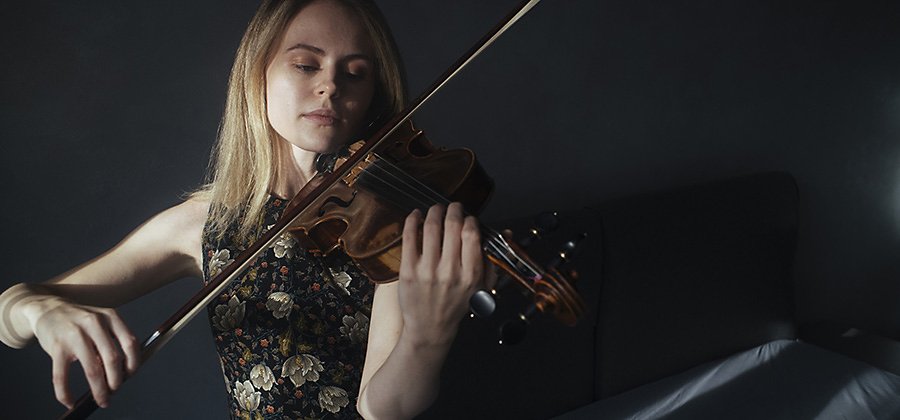
Great photos make great intros.
If a pic is worth a thousand words, then headshot photography is a language designed to speak to a person’s uniqueness. Professional headshots are like short personal essays. They give the viewer a glimpse into the passions, profession and interests of the subject with just a glance.
In the age where everyone seems to need a personal brand, a professional headshot can almost be considered your brand’s logo — and like a logo, it should be unique and invoke an emotional response.
“You want to be able to look at somebody’s headshot and say, ‘That person is someone I would like to work with. Somebody I can trust. I can tell we have the same vibe based on the energy that I’m getting from the picture,’” photographer Craig Mitchelldyer says.
It can be expensive and tedious to book a session for business headshots with a portrait photographer. But you can save time and money by throwing on a blazer (or other attire appropriate for your field) and doing your own photoshoot.
DIY headshots can be professional and they are a versatile tool that can connect you to the people you need to meet to advance your goals, whether it’s an audition with a casting director or a job interview through LinkedIn.
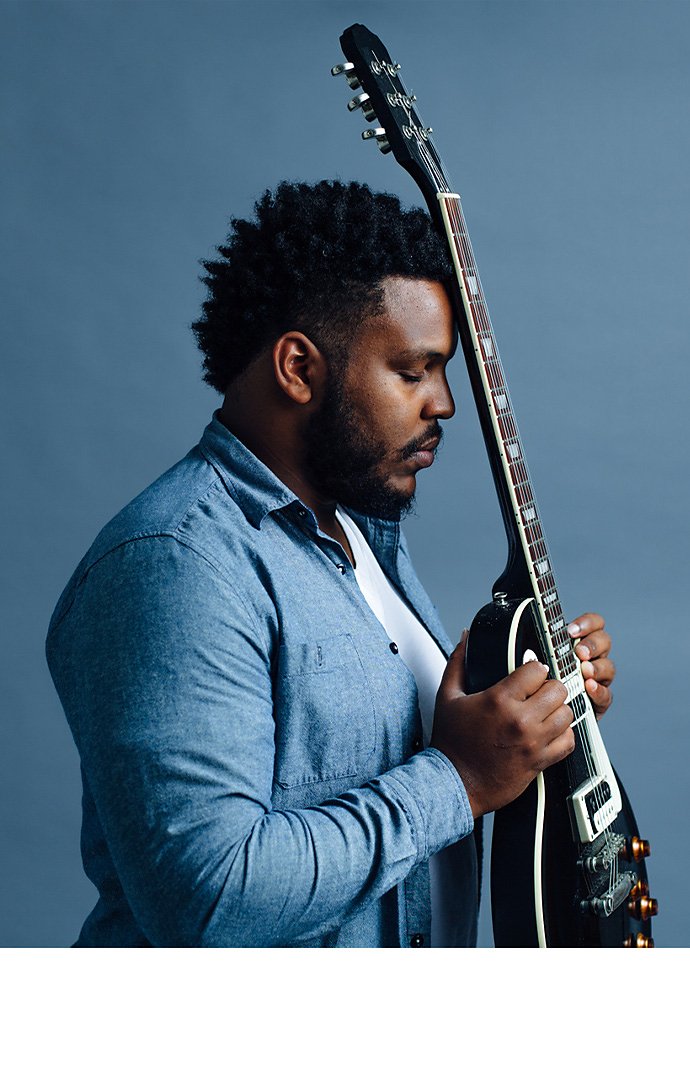
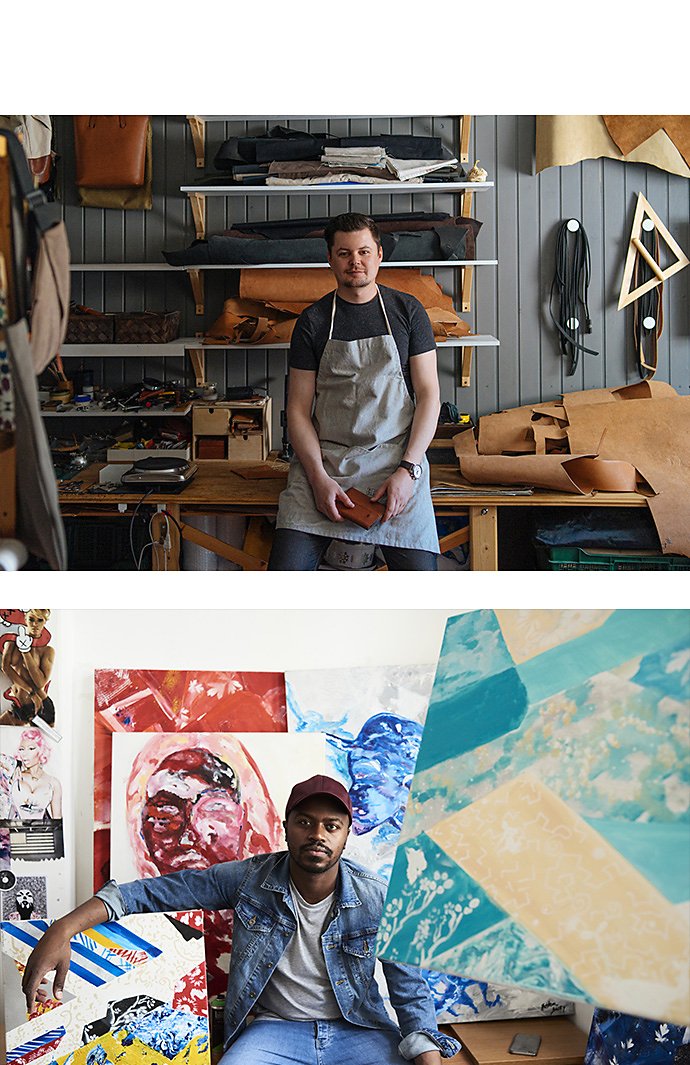
What makes a professional headshot different.
Corporate headshots are typically taken in bulk at the office with a focus on fitting the company’s brand, not the personal style of the employees. There’s some overlap between professional headshots and corporate headshots, but the key difference is the freedom to showcase personality — with professional headshots, you won’t be limited by a unifying corporate direction. “You can base it around what the subject wants,” says photographer Stephanie DeFranco.
Professional headshots concentrate on the individual, which allows for more creative licence. While they are professional, they can also be used in personal life or to show hobbies and interests.
What makes great DIY headshots.
Though used for more functional purposes, professional headshots still follow the portrait photography best practices, including how to use lighting to create a high-quality picture, rules of good composition and more.
“All photography is about the lighting and good light can make or break a photo," says Mitchelldyer.
Professional portraits are limited only by your creativity. Feel free to experiment to show some character. Try different poses and candid facial expressions for a more casual look. Visit a location with a lot of natural light for an unforgettable first impression.
Bring items or props related to your profession or hobby to reinforce that connection. Just make sure your headshots fit you and the industry you want to flourish in.
Why DIY headshots are essential.
Most people use social media profiles to build their personal brands. Your photos can still look professional, even if you’re doing it yourself.
A professional-looking self-portrait can be used as a profile photo on LinkedIn or Instagram. Not only is it a crucial element of a strong social media presence, but it delivers an air of creativity and professionalism that selfies often lack. It acts as a visual business card that reveals a portion of who you are and helps you to gain an audience that resonates with you.
“There’s no specific industry that needs headshots more than any other,” says Mitchelldyer. “In my opinion, everybody needs a really good headshot.”
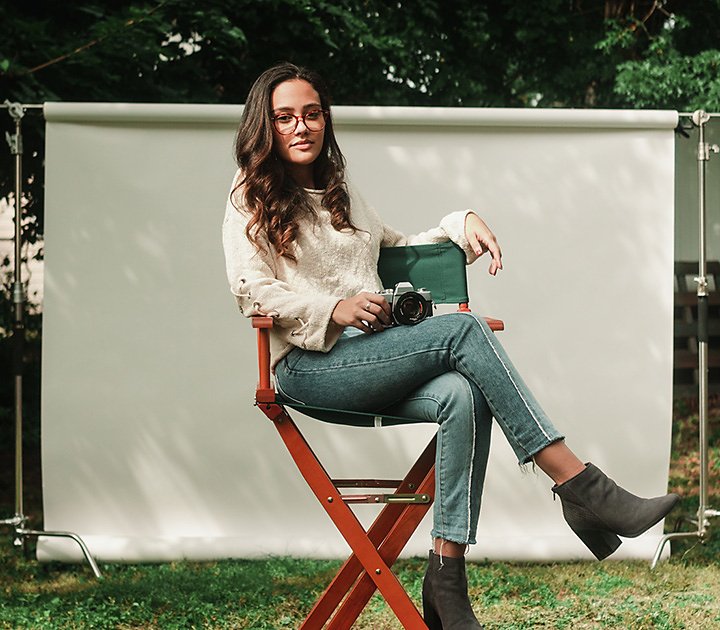
Take your own professional headshot.
Your photos can still look professional, even if you’re the one behind the lens. Follow these tips to set yourself up for DIY headshot success.
Scout it out.
Find a location that suits what you want to communicate in your photo. If you’re an art lover, a museum or art gallery is an excellent place to start. If you’re into writing, a bookshop can showcase your love of words. Think about your headshot’s purpose — what industry or field you want to connect with — and make your decision based on your intended message.
Gather things you may need.
If your shoot is genuinely DIY, you may need to get creative with your gear.
1. Steady your shot.
A tripod is an excellent tool when it comes to self-portraits. If you don’t have one, a stable table and a stack of books to prop up a smartphone can act as a quick stand-in. If you can ask a friend to help you, even better. A second set of hands can help you to get better angles and give real-time feedback.
2. Amplify your lighting.
A reflector is also a sound investment, especially if you’re shooting outside. It can direct light where you need it.
3. Grab your camera.
A DSLR camera is a great option. A good lens to shoot portraits with typically has a focal length of 50 mm or longer. If you’re on a budget, a smartphone like an iPhone is more than capable as a stand-in. Modern camera apps with features like burst mode and self-timers can help capture professional-looking headshots, whether you’re alone or working with others.
Turn to the light.
A clean, even light source is ideal to produce the highest-quality headshots. Natural light outdoors during golden hour or midday light diffused by shade works best. Indoors, you can set up next to a window that’s away from direct sunlight to avoid overexposure. If sufficient light is unavailable, you can find inexpensive lighting equipment or create your own. White paper is a quick and easy replacement as a light reflector, much like in this DIY lightbox. It can help to cast even light on a subject.
Background check.
Though it seems like a minute detail, backgrounds can add depth, meaning and story to your portrait. A simple background with solid colours balances your composition and makes your facial expressions stand out. Keep an eye out for interesting places with leading lines or natural frames that will set the scene and complement your appearance.
Alternatively, the bokeh effect blurs backgrounds, making subjects even more striking. Test how different backgrounds look on your next photo and find the right recipe to create stronger professional portraits by yourself. Make sure that you review your background for any unwanted items before you shoot.
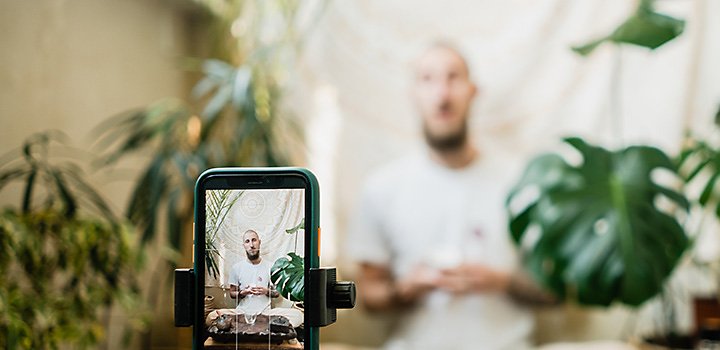
Set it up.
Whether you’re indoors or out, make sure the camera is at chin level and point it straight ahead. Put the camera about two to three feet away from where you’ll be posing. After you position it to your liking, you can test out a slight upward tilt for a different look.
Be yourself.
Remember, don’t take yourself too seriously. Ask someone to make you laugh to get your friendliest facial expressions or play background music guaranteed to keep you smiling. Focus on looking approachable and loose.
Take a lot of pics of yourself to find the one that suits you best. When you finish, export your photos to Adobe Photoshop Lightroom for any needed touch-ups.
Capture attention with Adobe.
The perfect shot may be only a few edits away.
With Photoshop Lightroom, you can remove unwanted items and objects from your composition with the Spot Healing Brush or you can recolor the image as you see fit with the Colour Mixing tool. Explore thousands of filters, gradients, swatches and more to find the right assets and adjustments to elevate your work. With cloud-based storage and mobile integration, you can edit and share your work to your LinkedIn profile or Twitter account from wherever your headshot session is, whether it’s the local library or the Louvre.
Contributors
Do more with Adobe Photoshop Lightroom.
Edit photos easily with Lightroom presets, Super Resolution, easily share photos from any device and access your projects anywhere with cloud photo storage management.
You might also be interested in…
Creating great portrait photography.
Take a step closer to perfect portraits with tips and advice from professional photographers.
The basics of candid photography.
Discover how to capture candid moments with advice and tips from the pros.
What is ISO?
Discover the role this pillar of the exposure triangle plays in photography.
The basics of photography composition.
Composition is all-important for photographers. Learn more with these tips from the pros.



